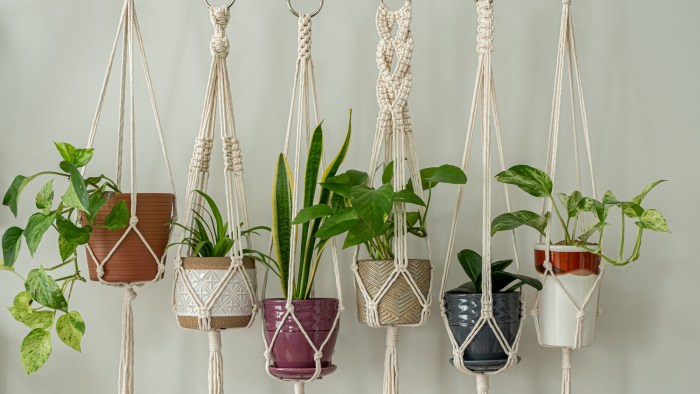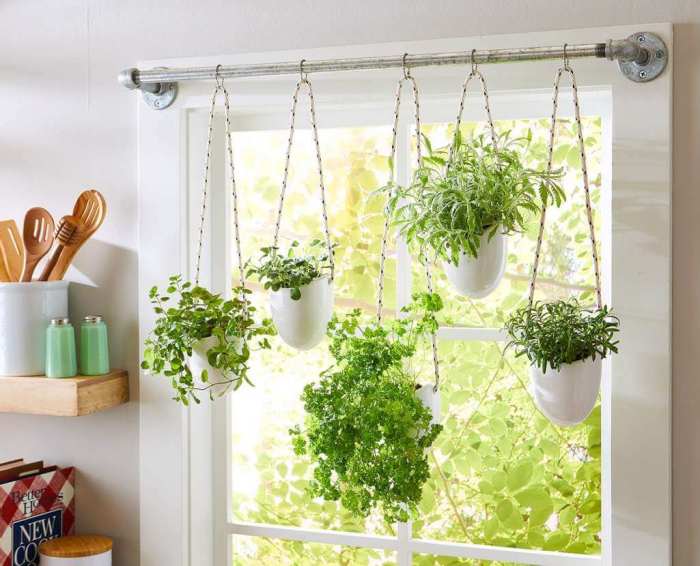When to buy hanging plants – Whether you’re a seasoned plant enthusiast or just starting to bring some greenery into your home, hanging plants are a fantastic way to add life and beauty to your space. But when is the best time to buy hanging plants? The answer depends on a few factors, including the seasons, climate, plant types, and your home environment.
This comprehensive guide will provide you with all the information you need to make the right decision and bring home thriving hanging plants.
As you consider when to buy hanging plants, keep in mind that the ideal time to purchase will vary depending on your specific circumstances. Factors such as your local climate and the availability of certain plant varieties will play a role in your decision.
Seasons and Climate
When selecting hanging plants, considering the seasons and climate is crucial. The ideal time to purchase these plants varies depending on the region’s temperature and rainfall patterns.
In temperate climates, spring and early summer are generally the best times to buy hanging plants. During these seasons, temperatures are moderate, and there is ample rainfall to support plant growth. In warmer climates, plants can be purchased throughout the year, although it is advisable to avoid the hottest months of summer when plants may struggle to establish themselves.
Climate Impact
The climate of a region significantly impacts the selection and care of hanging plants. In areas with high humidity and rainfall, plants that thrive in moist environments, such as ferns and begonias, are suitable choices. In drier climates, drought-tolerant plants, such as succulents and cacti, are more appropriate.
Plant Types and Availability

When selecting hanging plants, consider the types of plants available and their seasonal availability. A wide variety of hanging plants are available, each with unique characteristics and growth habits.
When is the best time to buy hanging plants? If you’re looking for a wide selection of bunnings hanging ferns , consider purchasing during the spring or fall. These seasons offer the most variety and the best chance of finding healthy plants.
When buying hanging plants, it’s important to inspect the roots for any signs of rot or damage.
Popular Hanging Plants
- Spider Plant (Chlorophytum comosum): Known for its long, trailing leaves with white or yellow stripes, spider plants are easy to care for and produce plantlets that can be propagated.
- Pothos (Epipremnum aureum): A popular choice for its heart-shaped leaves and tolerance to low light, pothos comes in a variety of colors, including green, yellow, and white.
- String of Pearls (Senecio rowleyanus): With its cascading stems of bead-like leaves, string of pearls is a unique and eye-catching hanging plant.
- Ferns:Ferns, such as maidenhair fern ( Adiantum capillus-veneris) and Boston fern ( Nephrolepis exaltata), add a touch of elegance with their delicate fronds.
- Air Plants (Tillandsia spp.): These unique plants absorb nutrients from the air and can be displayed in various ways, including hanging in terrariums or on driftwood.
Seasonal Availability, When to buy hanging plants
The availability of hanging plants varies throughout the year, depending on the climate and growing season. In general, most hanging plants are readily available during the spring and summer months, when nurseries and garden centers have a wide selection.
During the fall and winter, the availability of certain plant varieties may be limited, especially in colder climates. However, some hanging plants, such as spider plants and pothos, are more adaptable and can be found year-round.
As the days grow longer and the weather warms, many homeowners are considering adding some greenery to their homes. Hanging plants are a great way to add life to a room, and they can also help to improve air quality.
But when is the best time to buy hanging plants? The best time to buy hanging plants is in the spring or fall, when the weather is mild and the plants are not stressed by heat or cold. Are hanging plants also a great way to add a touch of color and style to your home, and they can be a great way to bring the outdoors in.
Home Environment and Lighting
The success of hanging plants depends heavily on the lighting conditions in your home. Different plants have varying light requirements, so it’s crucial to assess the light levels in different rooms before selecting plants.
Assessing Light Conditions
To determine the light conditions in a room, observe the natural light throughout the day. North-facing windows receive indirect light, while south-facing windows get direct sunlight. East- and west-facing windows provide bright, indirect light in the morning and afternoon, respectively.
When is the best time to buy hanging plants? Spring and summer are ideal, as plants are actively growing and can better tolerate being transplanted. If you’re looking for a wide selection of hanging plant baskets, consider checking out bunnings hanging plant baskets . They offer a variety of styles and sizes to suit any indoor or outdoor space.
Remember, proper care is essential for healthy hanging plants, including regular watering, fertilizing, and providing adequate light.
You can also use a light meter to measure the light intensity in foot-candles (fc). Most hanging plants prefer light levels between 100 and 500 fc.
Lighting Requirements for Hanging Plants
- Low-light plants:These plants thrive in indirect light with less than 100 fc, such as ferns, spider plants, and peace lilies.
- Medium-light plants:These plants require indirect light with 100-500 fc, such as pothos, philodendrons, and ZZ plants.
- High-light plants:These plants need direct or bright indirect light with over 500 fc, such as succulents, cacti, and flowering plants.
Aesthetics and Design: When To Buy Hanging Plants

Hanging plants add visual interest and create a sense of lushness to any space. Their cascading foliage and unique shapes can transform a room, bringing nature indoors and creating a more inviting ambiance.
Visual Appeal of Hanging Plants
The visual appeal of hanging plants varies depending on the species, size, and shape of the plant. Some popular hanging plants and their key visual characteristics include:
| Plant | Visual Characteristics |
|---|---|
| Spider Plant | Long, trailing leaves with variegated patterns |
| Pothos | Heart-shaped leaves in various shades of green |
| Ferns | Delicate fronds with intricate patterns |
| String of Pearls | Trailing stems with small, bead-like leaves |
| Burro’s Tail | Thick, fleshy leaves that resemble a donkey’s tail |
Enhancing Ambiance
Hanging plants can enhance the ambiance of a space in several ways:
- Softening hard lines:The soft, flowing foliage of hanging plants can soften the harsh lines of furniture and walls.
- Creating a focal point:A large or striking hanging plant can become a focal point in a room, drawing the eye upward.
- Adding color and texture:The vibrant colors and varied textures of hanging plants can add interest and depth to a space.
- Improving air quality:Some hanging plants, such as spider plants and ferns, are known to purify the air.
Health Benefits and Maintenance
Hanging plants offer not only aesthetic appeal but also contribute to a healthier indoor environment. Their foliage helps purify the air by absorbing harmful toxins and pollutants, such as benzene, formaldehyde, and trichloroethylene.
Proper Care and Maintenance
To ensure the longevity of hanging plants, proper care and maintenance are essential. These include:
- Watering:Water hanging plants thoroughly when the soil feels dry to the touch. Allow excess water to drain away to prevent root rot.
- Fertilizing:Fertilize hanging plants every few months with a balanced liquid fertilizer. Avoid over-fertilizing, as this can damage the plant.
- Light:Most hanging plants prefer bright, indirect light. Avoid placing them in direct sunlight, as this can scorch the leaves.
- Humidity:Some hanging plants, such as ferns and mosses, prefer high humidity. To increase humidity, place the plant on a pebble tray filled with water or use a humidifier.
- Pruning:Regularly prune hanging plants to remove dead or damaged leaves and stems. This will encourage new growth and keep the plant looking its best.
Ending Remarks
By considering the factors discussed in this guide, you can determine the optimal time to buy hanging plants for your home. Whether you choose to purchase during the spring, summer, or fall, with proper care and maintenance, your hanging plants will thrive and bring joy to your living space for years to come.
Essential FAQs
What are the benefits of having hanging plants?
Hanging plants offer numerous benefits, including purifying the air, reducing stress, and adding a touch of nature to your home. They can also help to create a sense of privacy and improve your overall well-being.
What are some popular types of hanging plants?
Some popular types of hanging plants include pothos, spider plants, ferns, and succulents. These plants are known for their hardiness, adaptability, and ability to thrive in a variety of indoor environments.
How do I care for hanging plants?
The specific care requirements for hanging plants will vary depending on the type of plant. However, general care tips include providing bright, indirect light, watering when the soil is dry to the touch, and fertilizing monthly during the growing season.